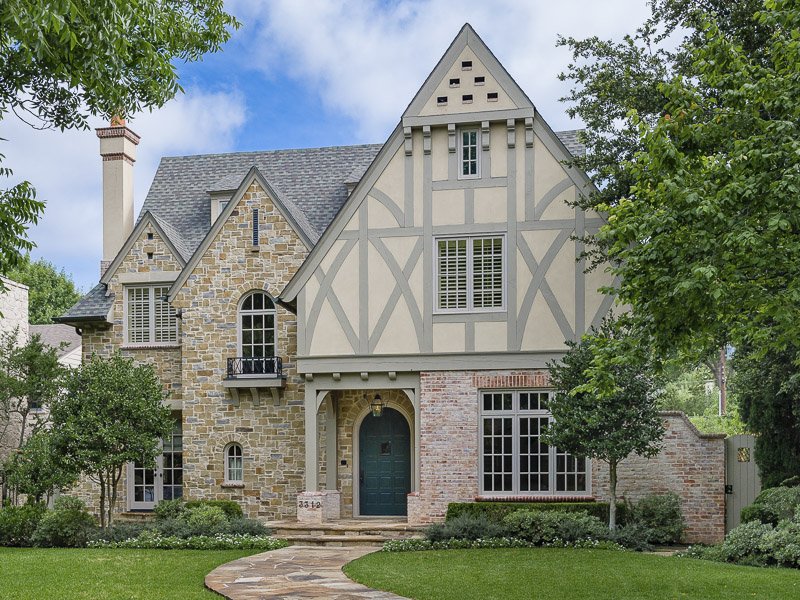#6838. Elegant Tudor Facade with Stone and Half-Timber Combination
The image showcases an exquisite example of an English Tudor-style country house that harmoniously combines several architectural techniques and materials. The main facade of the building displays classic elements of Tudor architecture: the characteristic half-timbering on the upper level with decorative beams creating a geometric pattern against the light stuccoed surface.
The lower part of the facade is clad in natural sandstone, which creates a contrast with the upper section and adds solidity to the building. The right part of the house features lighter-toned brick masonry, enriching the overall composition with a variety of textures. This combination of materials is one of the key techniques in facade design within the neoclassical style.
Of particular note is the high triangular roof with a steep slope, covered with gray shingles. Small square windows, arranged in a row under the ridge of the roof, not only serve as a source of natural light for the attic space but also act as a decorative element emphasizing the verticality of the composition.
The main entrance is designed as an arched portal with a green door, creating an expressive accent against the stone masonry. The windows of the house vary in shape and size—there are both rectangular and arched variants, most equipped with classic louvered shutters, which reinforces the traditional character of the building.
The natural landscape around the house is carefully thought out: a stone-paved pathway, a well-manicured lawn, and compact ornamental trees and shrubs frame the structure, creating a unified harmonious composition.
